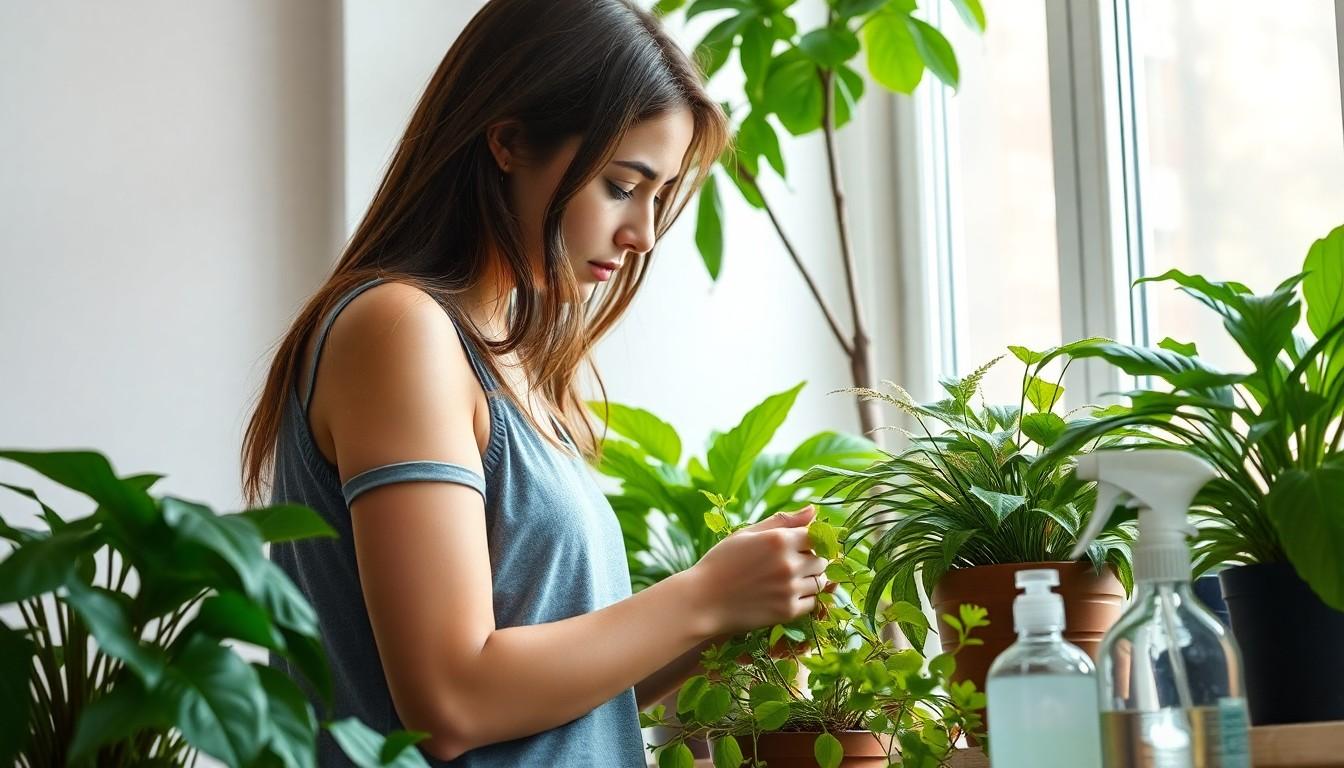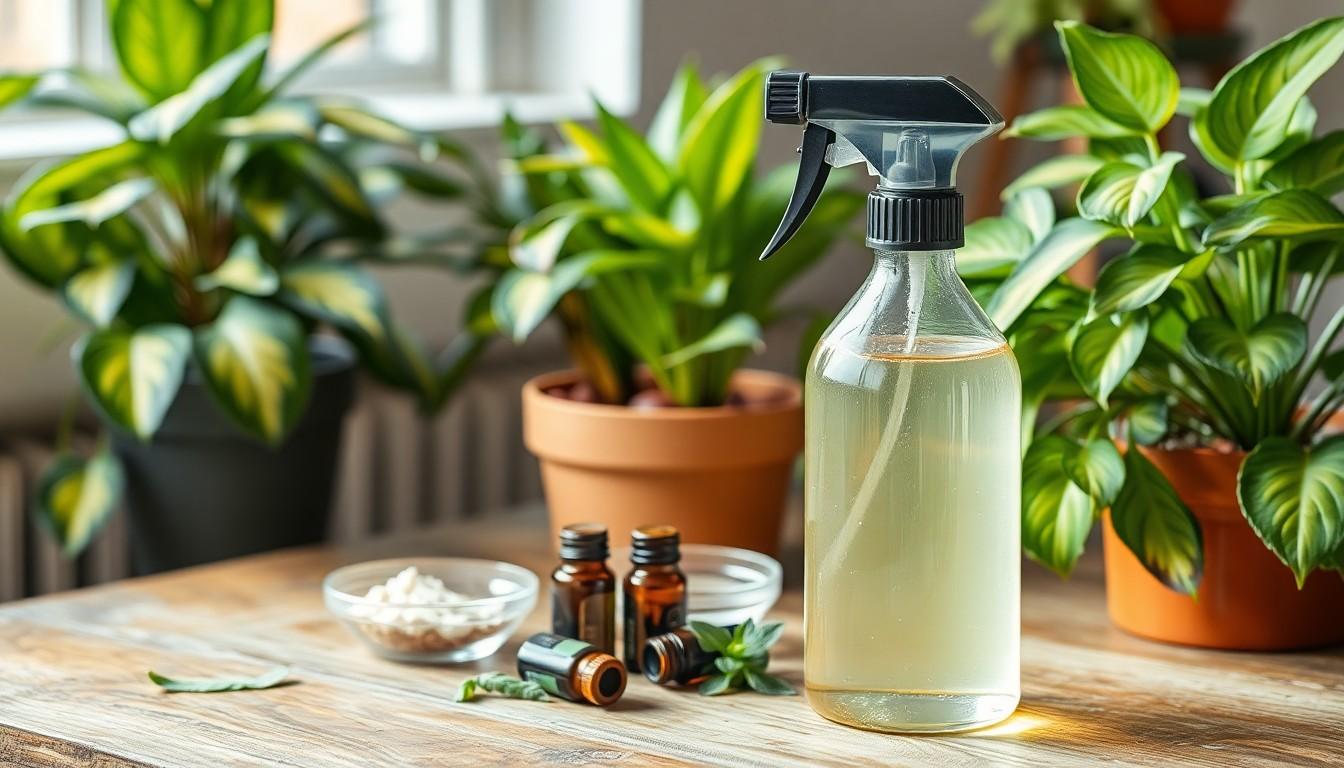Physical Address
304 North Cardinal St.
Dorchester Center, MA 02124

Houseplants are the green companions that brighten up any home, but what happens when uninvited guests crash the party? Those pesky bugs can turn a thriving oasis into a battleground, leaving plant lovers feeling like they’re in a horror movie. Fear not—there’s hope for your leafy friends!
House plant pests can significantly harm indoor greenery. Familiarizing with these invaders aids in effective management.
Aphids feed on sap, weakening plants and causing stunted growth. Mealybugs appear as white, cottony masses and thrive in leaf axils. Spider mites create fine webs and cause stippling on leaves. Fungus gnats lay eggs in moist soil, with larvae damaging young roots. Scale insects produce hard, protective shells and can result in leaf drop. Recognizing these common pests ensures timely intervention, preserving plant health.
Wilting leaves often indicate underlying pest issues. Yellowing foliage frequently means sap-sucking invaders are present. Presence of sticky residue suggests aphids or whiteflies, creating a sticky environment. Webbing around plant stems can signal spider mites at work. Small holes in leaves point to potential pest damage. Noticing these early warning signs allows for prompt action against infestations, safeguarding house plants.

Natural methods offer effective solutions to combat pests in house plants without chemicals. Various homemade remedies can help eliminate these unwanted bugs while ensuring plant health.
Homemade insecticidal soap effectively targets common houseplant pests. Combine one tablespoon of liquid dish soap with a quart of water to create the solution. Spray this mixture directly on infested plants, making sure to cover all leaf surfaces and stems. The soap suffocates bugs like aphids and mealybugs while being gentle on plants. Repeat this treatment every 7 to 10 days until pests disappear. Always test the solution on a small leaf area first to ensure it won’t damage the plant.
Essential oils serve as potent allies in pest control for indoor plants. Oils such as neem, tea tree, and peppermint possess natural insect-repelling properties. Mix a few drops of essential oil with water in a spray bottle, then apply to affected plants. This method not only deters pests but also leaves a pleasing fragrance. Use this spray weekly for optimal protection. While effective, ensure the oils are diluted properly to prevent plant damage.
Chemical solutions are available for effective pest control in house plants, especially when infestations become severe. These options provide strong measures against persistent bugs.
Commercial insecticides contain powerful ingredients designed to eliminate various pests. These products often target specific insects like aphids, spider mites, and whiteflies. Gardeners should read labels carefully to select the appropriate insecticide for their specific pest problem. Many insecticides require dilution with water before application, ensuring safety for both plants and users. Regular application, according to product instructions, leads to optimal results. Using a spray bottle helps achieve even coverage across foliage, maximizing the effectiveness of the treatment.
Precautions are essential when using chemical solutions on house plants. Always apply insecticides in a well-ventilated area to avoid inhaling harmful fumes. Wearing gloves protects skin from irritation caused by chemical exposure. It’s important to test the product on a small, inconspicuous leaf before widespread application to prevent damage. Applying during cooler parts of the day reduces the risk of plant burn. Following the manufacturer’s instructions ensures proper dosage, minimizing negative impacts on the plant and surrounding environment. Disposing of any leftover product responsibly prevents contamination and harm to wildlife.
Maintaining houseplant health involves proactive strategies that ward off pests effectively.
Providing optimal conditions for houseplants reduces the risk of pest infestations. Each plant species requires specific light, water, and soil conditions. An environment that meets these needs promotes strong, healthy growth, making plants less susceptible to bugs. Overwatering or underwatering creates stress, attracting unwanted pests. Fertilizing plants regularly supports their vitality, giving them the strength to resist attacks. Using high-quality potting soil, enriched with nutrients, helps cultivate a robust root system. When repotting, check for existing pests and ensure new soil is pest-free.
Conducting regular inspections helps catch pest problems early. Inspecting plants weekly for signs of pests, such as webs or sticky residue, allows for timely intervention. Ensuring leaves are clean and dust-free minimizes hiding spots for insects. Trimming dead or damaged foliage not only keeps plants looking healthy but also reduces pest habitats. Rotating pots encourages even growth and exposes all sides to light, making monitoring easier. Scheduling repotting every year allows for fresh soil and encourages an environment pests find less hospitable.
Maintaining healthy houseplants requires vigilance against pests that can threaten their beauty and vitality. By understanding the common signs of infestation and employing both natural and chemical solutions, plant lovers can effectively combat these nuisances.
Preventive measures play a crucial role in safeguarding plants from unwanted intruders. Regular care tailored to each plant’s needs ensures a thriving environment. With the right approach and timely interventions, anyone can enjoy a flourishing indoor garden free from pests.